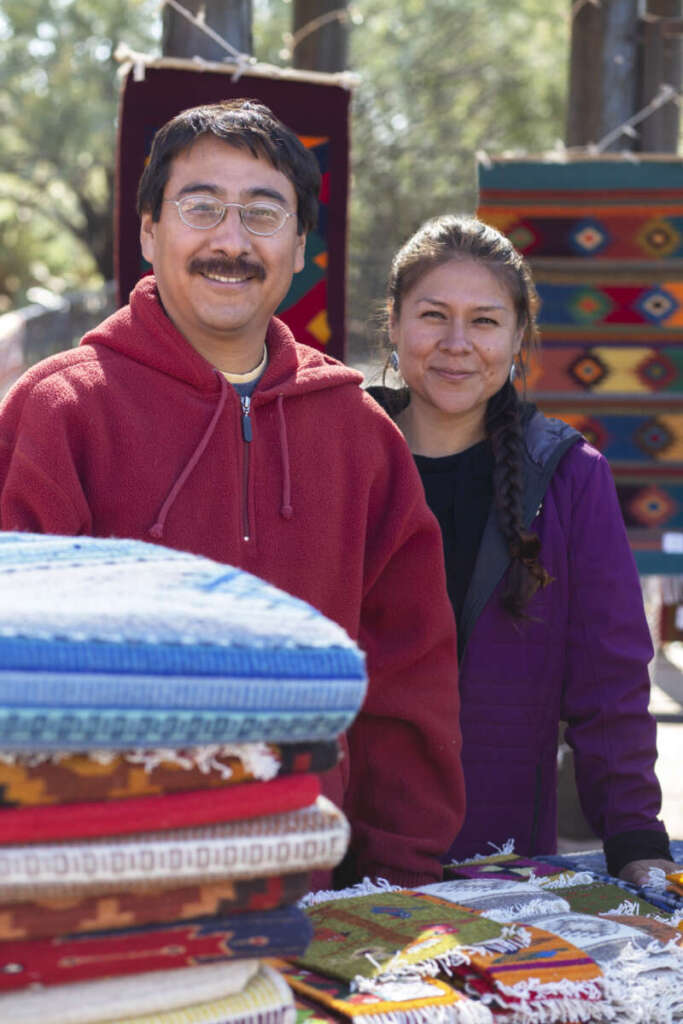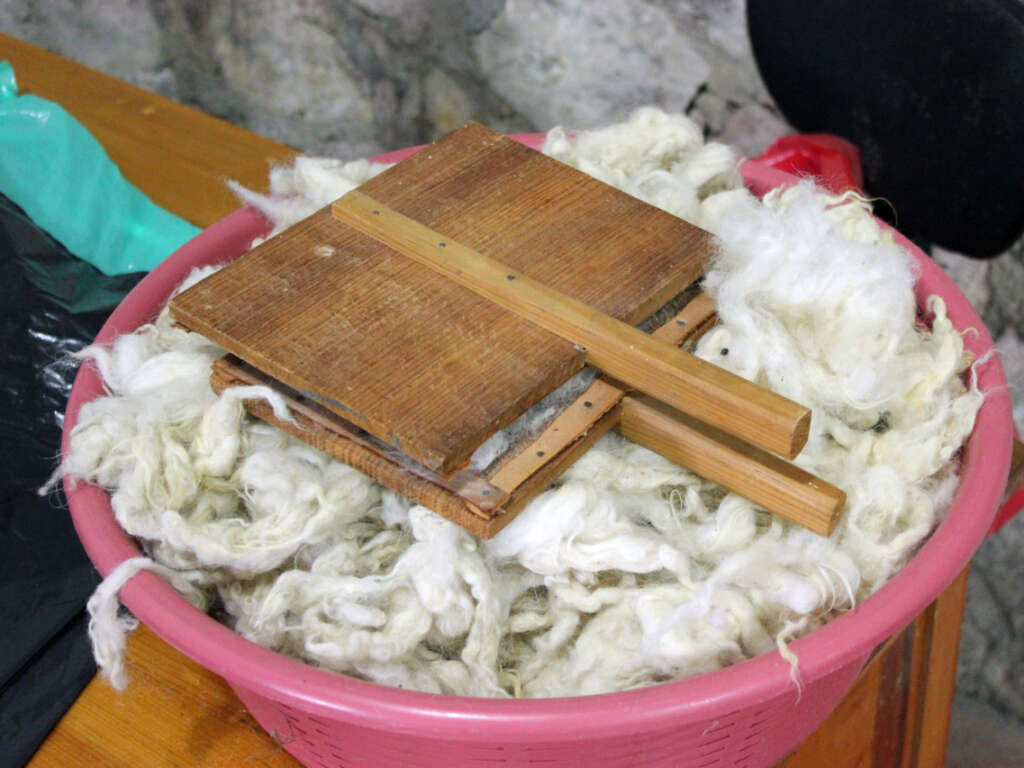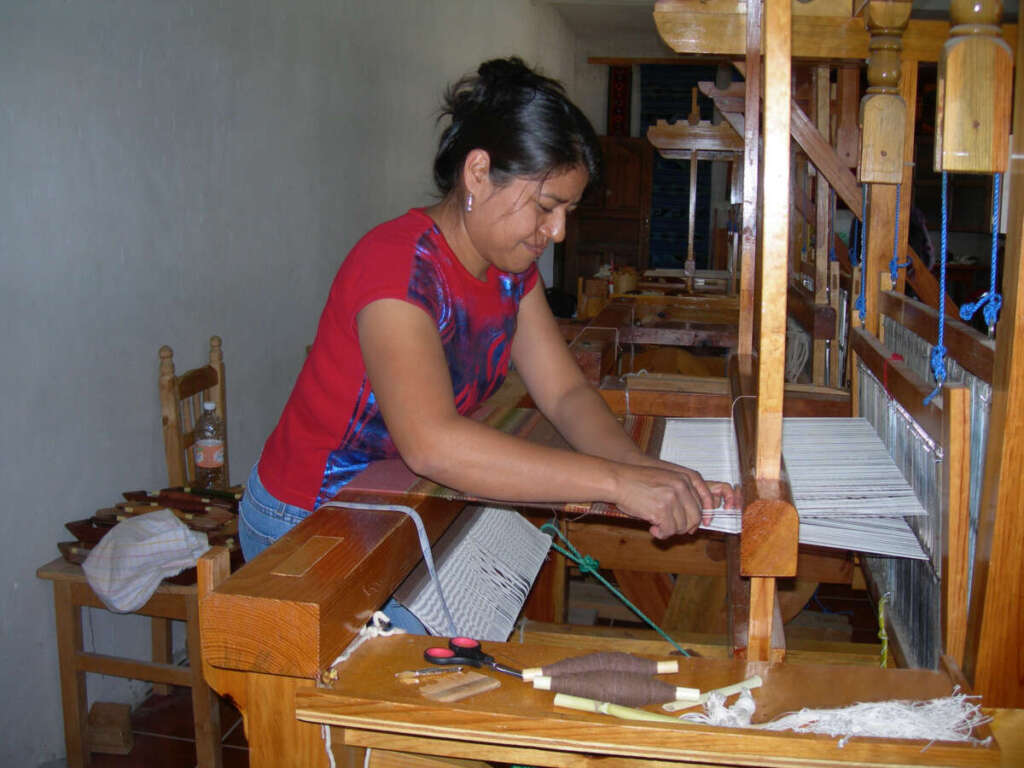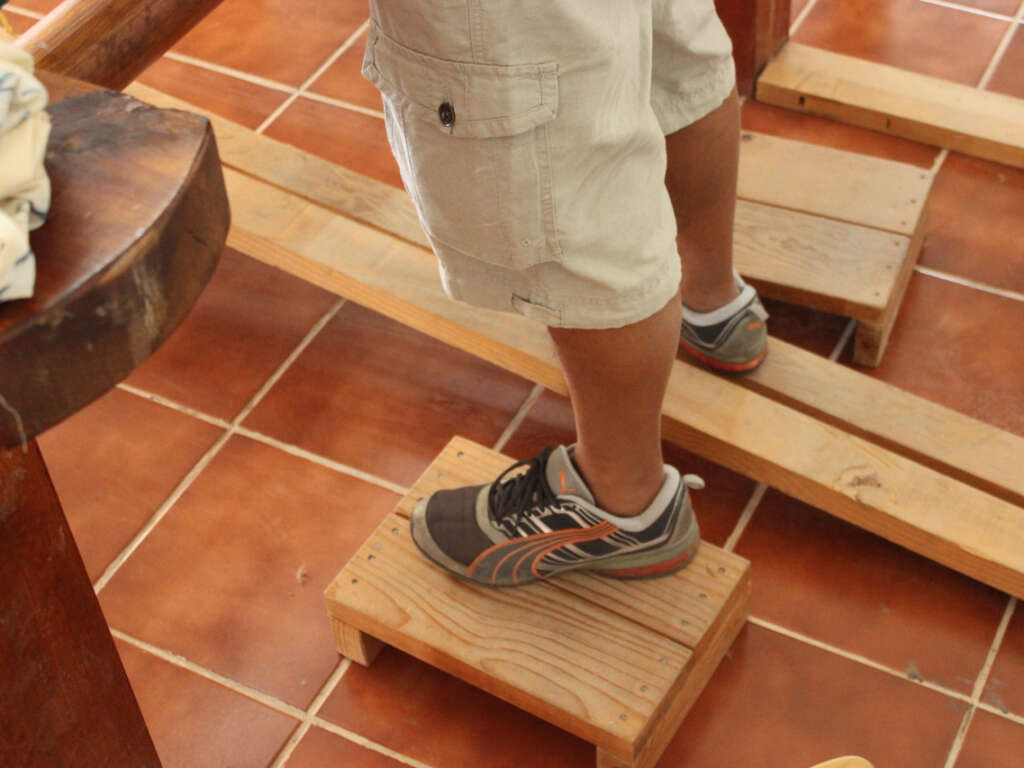
Weaving a Tale of Culture
February 8, 2022On a crisp morning, a tapestry of color appears as the rugs are lovingly placed one by one on display. Visitors to Tohono Chul stop to admire the beautiful hand-made designs, while some greet Alex and his sister, Nancy, as old friends, welcoming them back for another season. The ritual of sharing their family’s culture has been repeated each November and February for more than 10 years at Tohono Chul.
In his native town of Teotitlán del Valle, Oaxaca, Mexico, Alex met a man who would change his life. Entranced by the beauty and quality of the rugs Alex and his family created, Al Kogel, an art professor from Arizona, invited Alex to come to Tucson to share his art and culture with his students. He sponsored Alex to return each year and introduced him to a favorite place of his, Tohono Chul Park. Here, Alex and his sisters have been offering their handmade 100% wool rugs for sale twice a year.
Alexandro Eliseo Martinez Ruiz and his sisters, Nancy, Socorro, Lorena and Fanny, are part of a large family of Zapotec weavers. Their grandfather, Eliseo Martinez, founded Casa Martinez in 1936 and became well-known for the quality of his craft. His large family of 14 children all helped in the workshop, weaving on looms with foot pedals, just as the Spaniards used 500 years ago.
Alex learned the art of weaving from his father, and continues to create rugs on his father’s 100-year-old loom, incorporating some of his original designs. The entire family participates in the process – from raising the sheep and washing and dyeing the wool, to designing and hand weaving the final product.
A variety of wools are used to create the rugs. The primary type, Churro, comes from Oaxacan sheep originally brought from Spain. Other wools used include Mohair, Merino from New Zealand, and the more expensive Lincoln from England.
The dyes come from plants, minerals and even insects. Mosses provide the green, pecan shells yield brown and pink comes from pomegranate peel. The mineral indigo (from the anil plant) results in a beautiful rich blue after reacting with oxygen. The yellow hues come from zacatlaxcalli, a natural plant in Oaxaca similar to the Manzanita flower, and the oranges and golds are from marigolds collected after the Day of the Dead celebrations. The vivid red is a carmine dye derived from the cochineal, an insect that is found on the Opuntia, or prickly pear cactus.
Variations in the intensity of colors is achieved by using different shades of wool or different reacting agents (mordants) such as alum, baking soda, vinegar, salt, lime juice, and cream of tartar.
The rugs are a labor of love. Once the wool has been cleaned and dyed, hand weaving can take 2-3 weeks for a small rug and up to 4-5 months for a larger, more intricate piece. Factors such as size, materials used and complexity of design all contribute to the price of the finished product.
Alex is passionate about weaving and keeping his culture alive. His love for the craft and desire to maintain the ancient traditions of his ancestors are evident in the heirloom quality of his products.





